Colourful cold-climate Orchids
By Masumi Robertson
March 2021
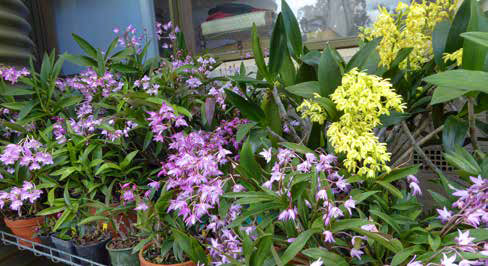
I have been growing Thelychiton (Dendrobium) orchids in Canberra for over 25 years. During this time, I discovered that they are some of the hardiest plants in our garden. Orchids are thought to be delicate, needing a heated glasshouse, making them difficult to grow and enjoy in a cold climate like Canberra. Not these orchids. They are easy care, hardy plants. I am often asked how I grow my orchids and in particular to get them to flower well. Here are a few tips I have gathered over the years to grow and enjoy this wonderful group of native plants.
What to grow
I grow many orchids in the genus Thelychiton, usually known as ‘rock orchids’, epiphytic orchids growing on rocks. They are found in coastal eastern Australia. The most reliable plants are those species found in NSW, mainly T. kinginanus (pink rock orchid), T. speciosus (Sydney rock orchid), and their hybrids.
T. kingianus is the common pink rock orchid, but the flower colour ranges from deep red to white with labellum (the middle bit) marked with dark pink lines. They grow to about 30 cm high with flower stems about 20 cm long.
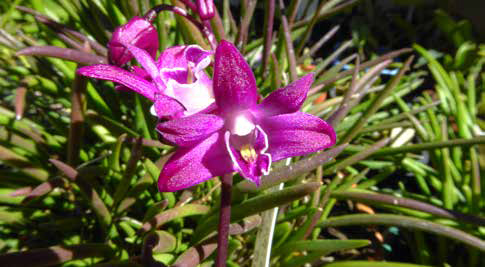
T. speciosus is a very large plant, growing to almost one metre tall with flowers. It is a spectacular plant when in flower.
Some of its closely related species are smaller and may be easier to manage.
There are numerous hybrids of these and other species. T. ‘Bardo Rose’ has been around for over 60 years.



T. x delicatus is a natural hybrid also in cultivation for decades. It is available in white, pink to dark red, because one of its parents, T. kingianus, can be white to red.
And then there are other hybrids.
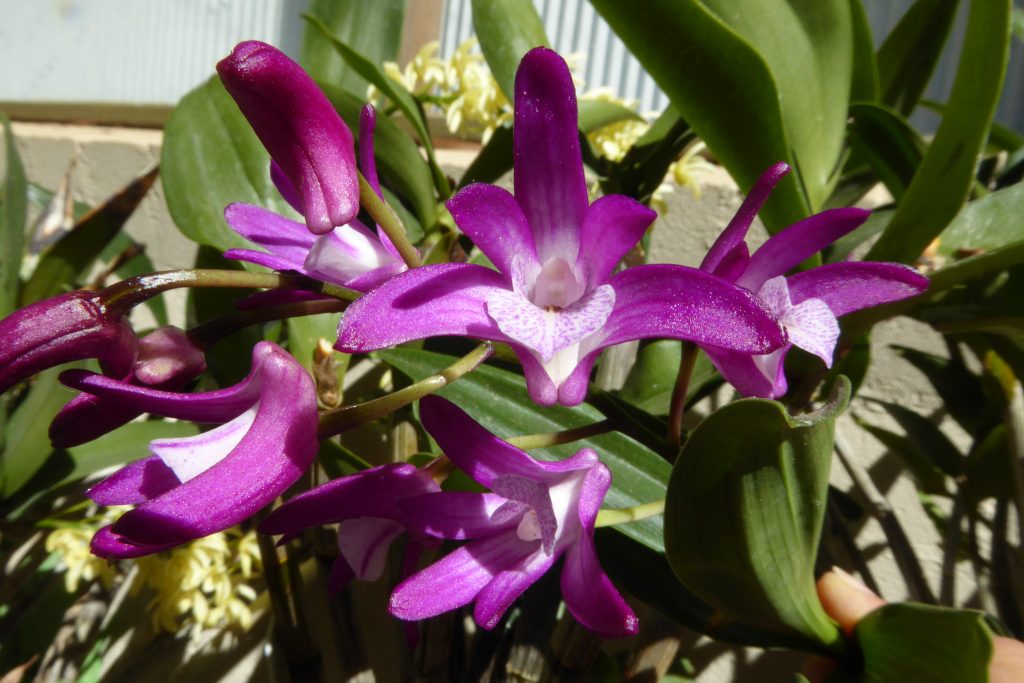
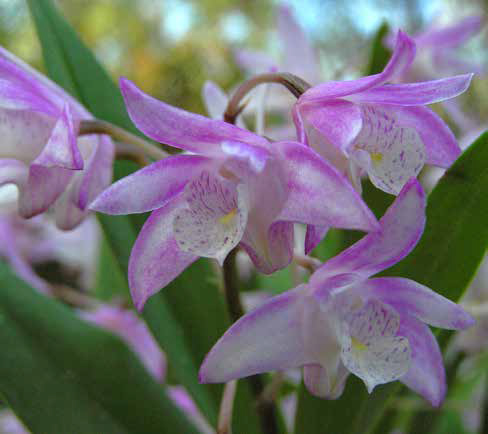
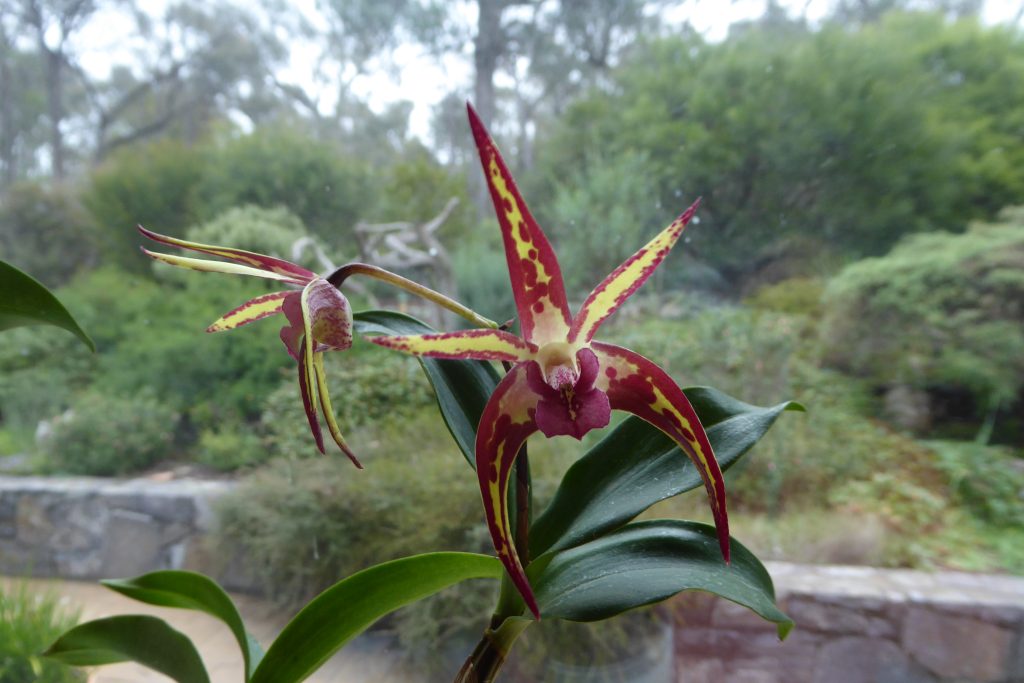

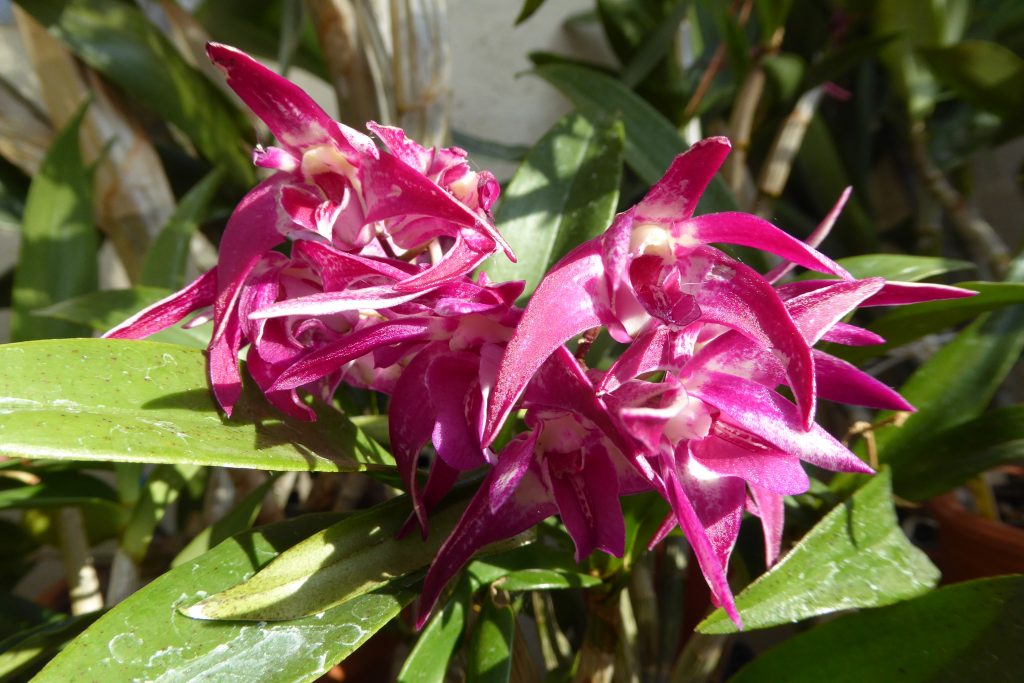
I also grow cold selected hybrids with species in the genus Tetrabaculum (used to be Dendrobium, grows in Qld).
An interesting feature of these hybrids with Tetrabaculum tetragonum is their flowering time. They can flower from February into October.
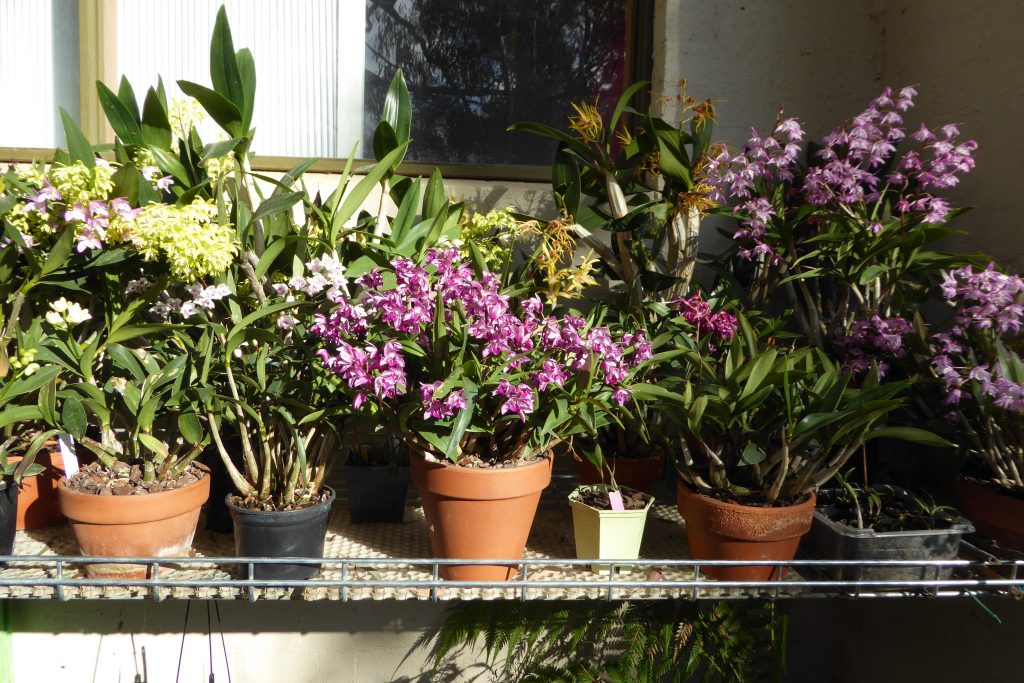
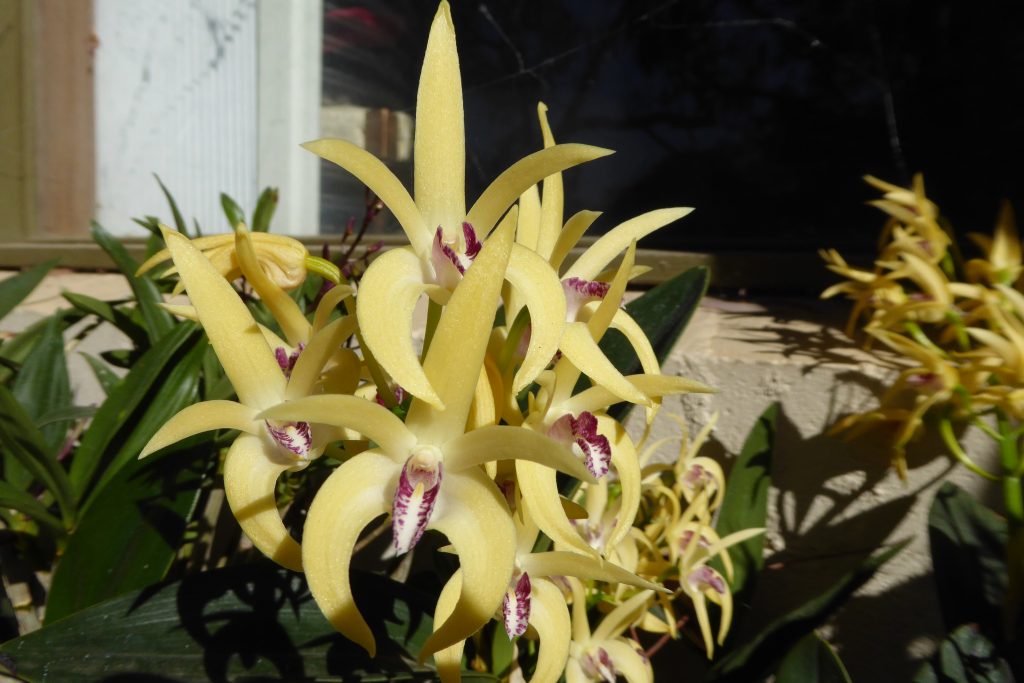
Where in the Garden
My orchids grow outdoors all year round. They are brought indoors when they flower to enjoy them and their fragrance. Most orchid growers build an orchid house, a shadehouse-like structure for orchids. But I did not have the space, so I looked at their needs.
- Frost free and minimise near-freezing cold air
- Lots of sun
- Free air movement
The natural habitat of these rock orchids is frost-free. Even though they are cold tolerant, they are frost sensitive. Our orchids are grown along the house, under the eaves to be frost free. Within the space, the temperature varies, so I place my plants according to their needs.
They are on a metal shelf about 80cm above ground. In winter some plants along the front edge of the shelf can be cold damaged when nights get very cold for days in a row. But the plants are not killed and recover well over the warmer months. I sometimes relocate my plants when cold damage is apparent.
Rock orchids grow in full sun on rocks and it is essential that they receive as much sun as the plants can handle. Our plants receive several hours of direct sun in the morning and are in a bright open site even when not in the direct sun. It is best to avoid hot afternoon sun in summer. I tend to sunburn my plants and when that happens, leaves turn lemon yellow and then to a dead white spot. It is important to give them enough sun for the plants to flower.
Our plants are grown outdoors, so there is plenty of air movement. If they are in a structure, make sure that there is good air movement even in winter by putting in a fan and spacing plants well apart. While most of my orchids are growing in pots with orchid bark, they can be grown without pots on the ground. I planted out two clumps of T. speciosus a few years ago and they are surviving — flowered and produced a few new canes. Plants can also be mounted on a slab of cork or other bark.
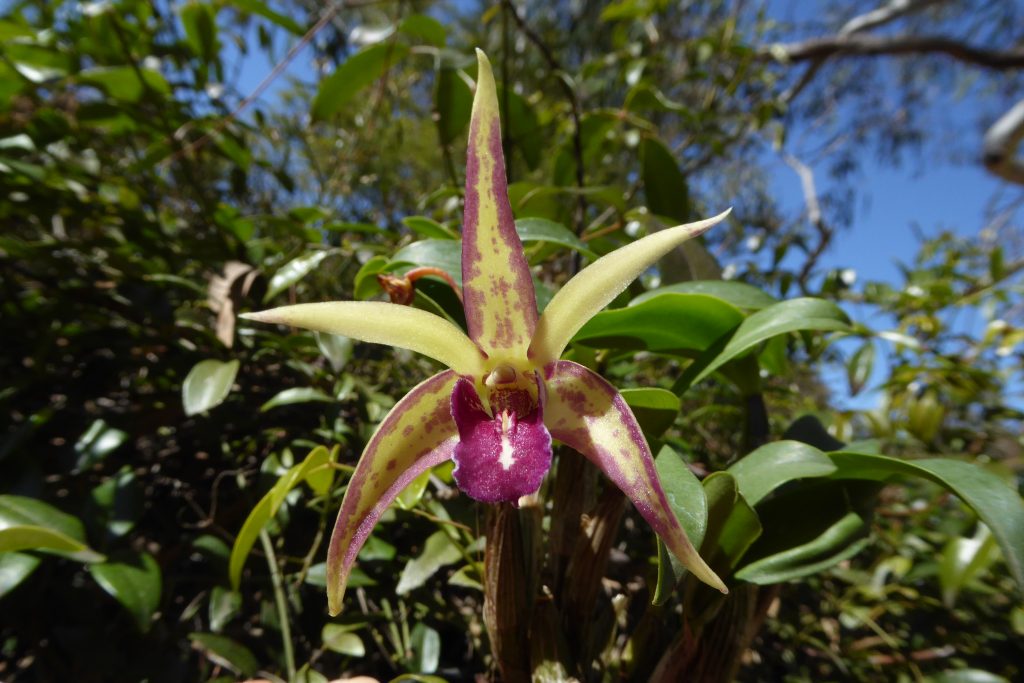
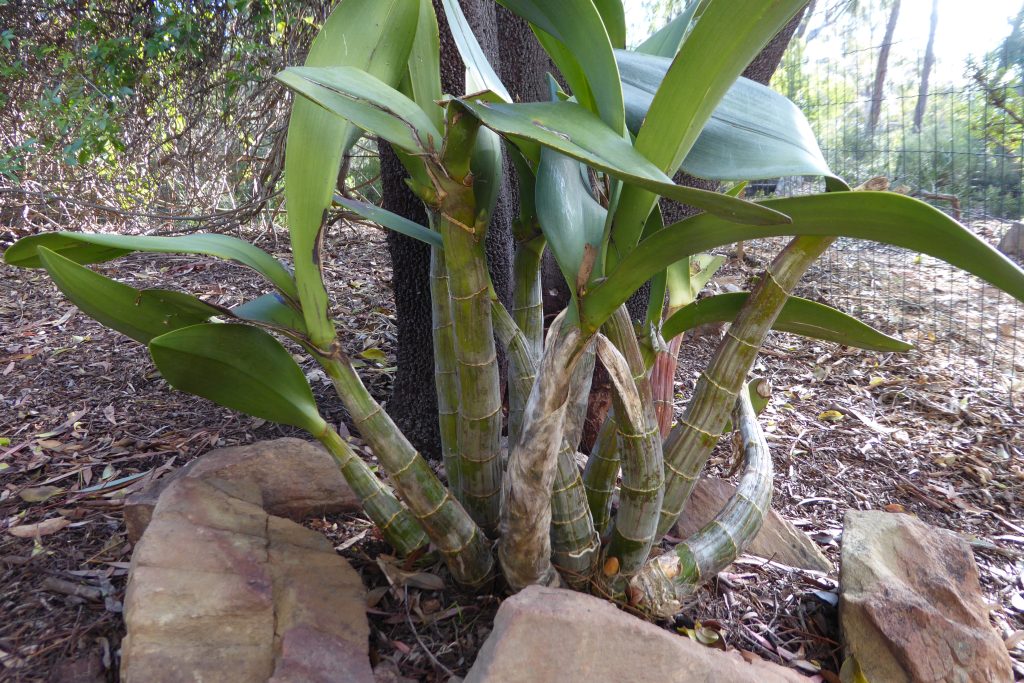
How much water?
Water as needed. These plants are dry tolerant. More orchids die from over watering rather than the lack of water. Even in the middle of a hot summer, these plants can survive without water for a number of days to weeks, depending on the size of the plant. But if you want your plant to grow and flower well, it needs to be watered. I usually water once a day in summer, and less, once every two to three weeks, in winter. I use rainwater when available from our water tanks. They are watered well, not a light spray, but a good drenching. But the plants and the orchid bark need to dry out between watering. Pots must not sit in a saucer of water, they must be free draining. Our open metal shelf is perfect for good drainage.
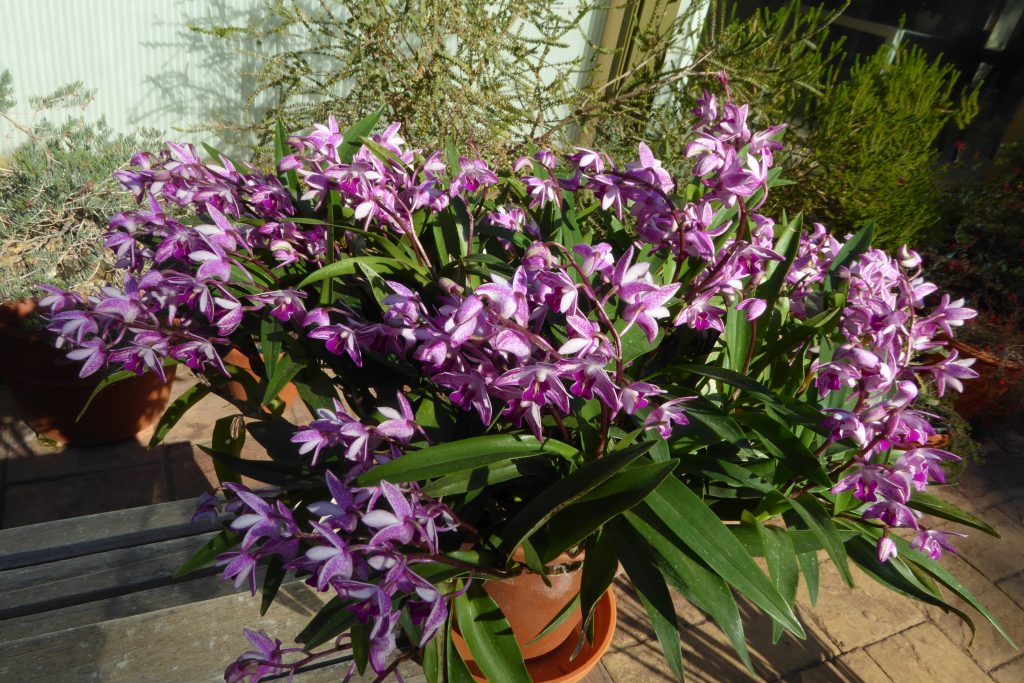
Fertilisers
Happy plants flower better, and that means watering and feeding. Some slow release fertiliser is applied in spring every year. In addition the plants are fed liquid fertiliser during the warmer months. I use Osmocote Native, because I use it for other native plants, but orchids are not fussy and any slow release would do. The same goes for liquid fertilisers. Aquasol or Thrive and other similar products would be suitable. Wayne Turville from AON recommends high Ca and Mg fertiliser. Dilute fertiliser applied more often is better than applying it in full strength.
So have a go. They are easy to grow. They have beautiful long-lasting flowers which are fragrant. Our T. kingianus flowers in winter if brought indoors and in October outdoors. And there is an almost endless choice of species, forms and hybrids to choose from, extending the flowering time even further.
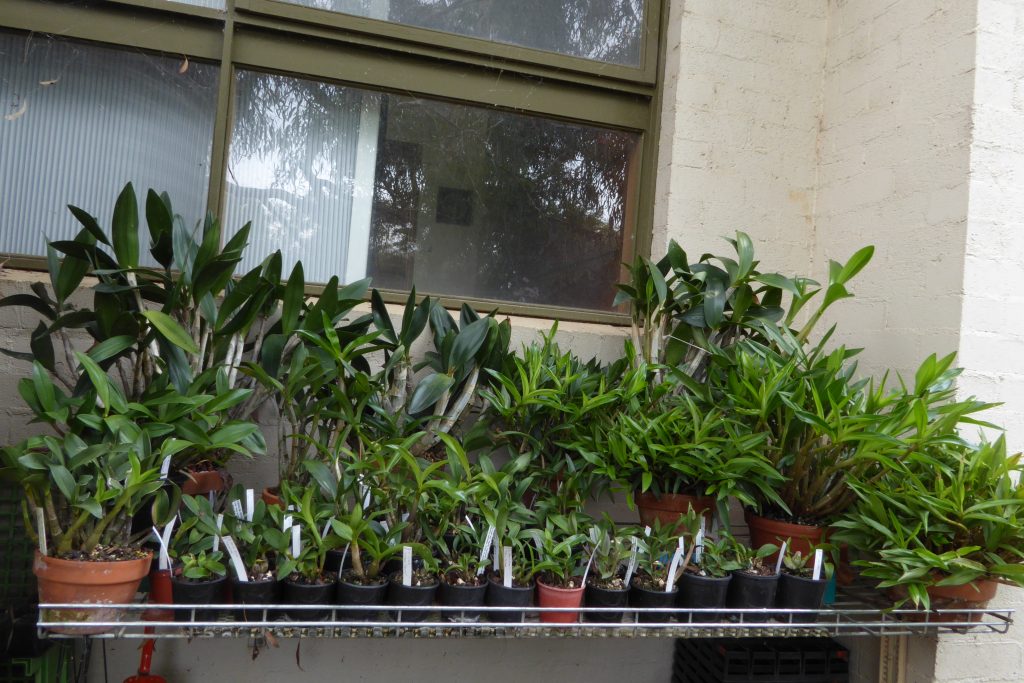
Back to Articles List
